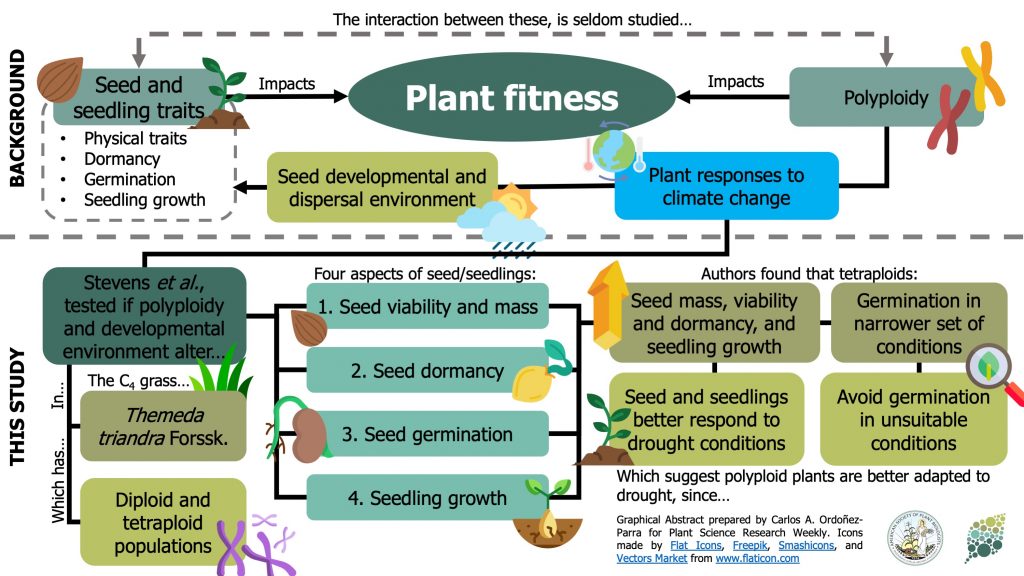
Ploidy affects the seed, dormancy and seedling characteristics of a perennial grass, conferring an advantage in stressful climates ($) (Plant Biol.)
Plant Science Research WeeklyBoth polyploidy (i.e., having more than two sets of chromosomes) and seed traits influence plant fitness. However, the interaction between these two factors is underexplored. Here, Stevens et al. tested the effect of polyploidy and seed developmental environment on 1) seed viability and mass; 2) seed…
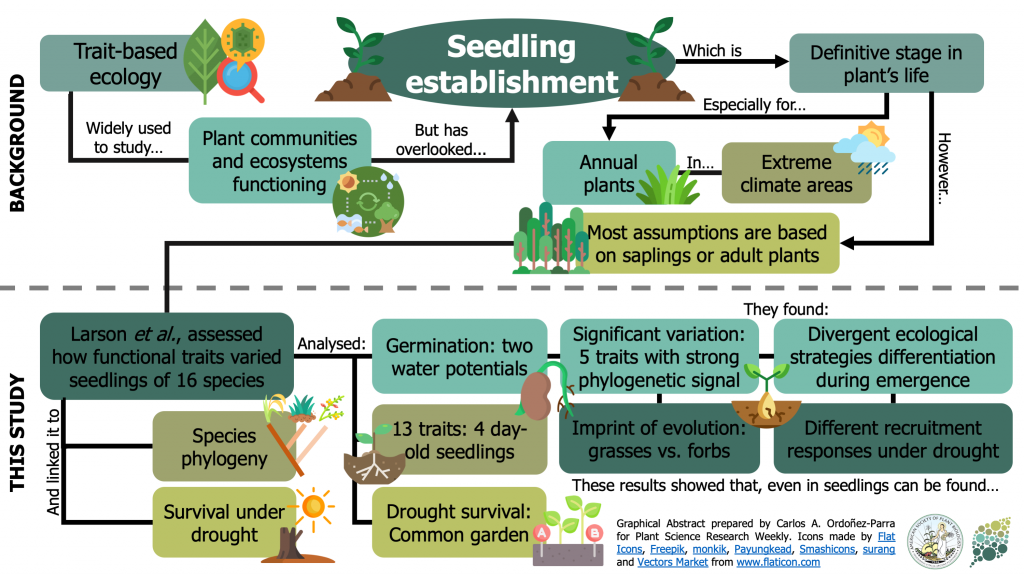
Ecological strategies begin at germination: Traits, plasticity, and survival in the first four days of plant life ($) (Funct. Ecol.)
Plant Science Research WeeklySeedling establishment is seldom addressed in trait-based ecology. Advocating for the importance of this stage of a plants' life, Larson et al. assessed how functional traits varied in newly emerged seedlings and how this was related to their phylogeny and survival under drought. The authors germinated…

The embryo sheath is an anti-adhesive structure that facilitates cotyledon emergence during germination in Arabidopsis ($) (Curr. Biol.)
Plant Science Research WeeklyThe embryo sheath is a glycoprotein structure formed during seed maturation in Arabidopsis thaliana. However, its function and its persistence after germination have been uncertain. Here, Doll et al. examined germination and seedling establishment of krs mutants deficient in the KERBEROS peptide that…

Evidence for physiological seed dormancy cycling in the woody shrub Asterolasia buxifolia and its ecological significance in fire‐prone systems ($) (Plant Biol.)
Plant Science Research WeeklyPhysiologically dormant seeds shift between dormancy (i.e., unable to germinate), conditional dormancy (i.e., germination restricted to a narrow set of conditions), and non-dormancy (i.e., germination under a wide range of conditions) in response to environmental changes. This mechanism –known as dormancy…
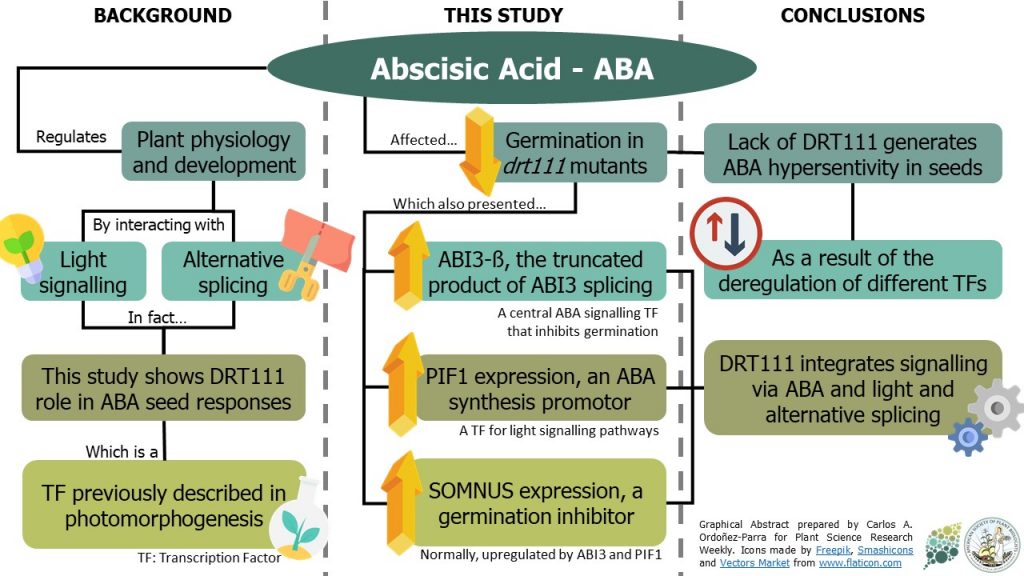
DRT111/SFPS splicing factor controls ABA sensitivity during seed development and germination (Plant Physiol)
Plant Science Research WeeklyAbscisic acid (ABA) acts on different plant physiological and developmental processes by quite complex mechanisms. In fact, some of these processes interact with light signaling and some are controlled by alternative splicing. In this paper, Punzo et al. show that DRT111 – a splicing factor previously…
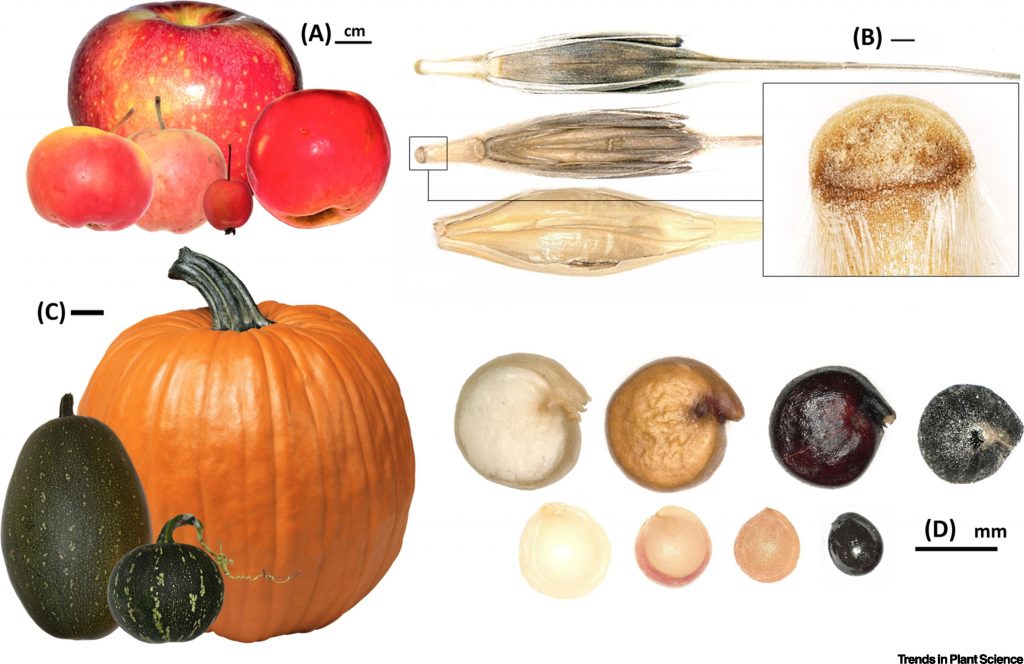
Opinion. Anthropogenic seed dispersal: Rethinking the origins of plant domestication (Trends Plant Sci)
Plant Science Research WeeklyStudies regarding the development of agriculture have started to integrate a plant evolutionary perspective. In this context, Spengler explores how changes in seed dispersal allowed plant domestication during the first half of the Holocene (e.g., more than 5000 years ago). He starts by redefining domestication…
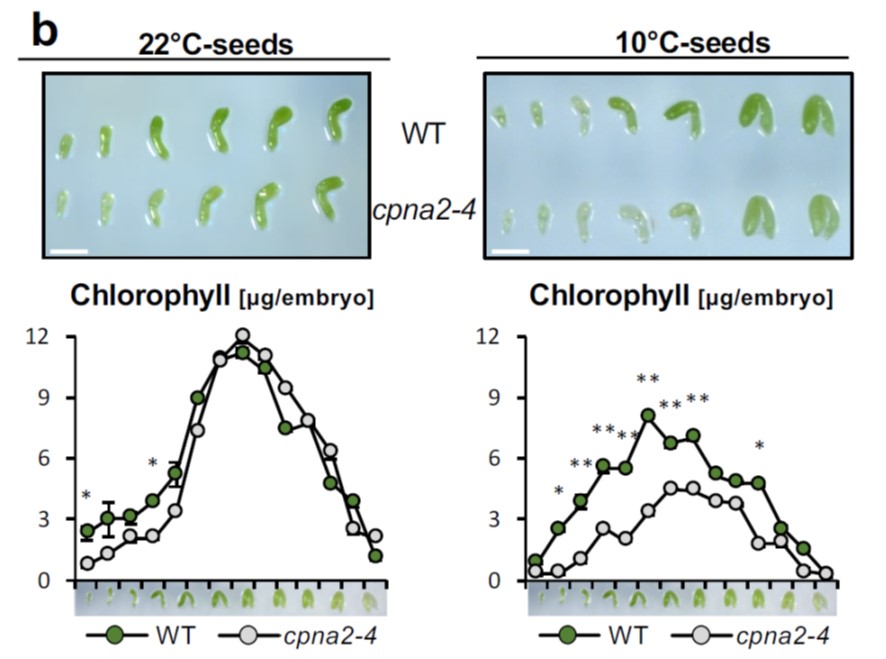
Embryonic photosynthesis affects post-germination plant growth (Plant Physiol.)
Plant Science Research WeeklyAngiosperm seeds develop within maternal tissues, yet in some species including Arabidopsis the developing embryos carry out photosynthesis. In Arabidopsis, this is transitory, and the embryonic chloroplasts lose chlorophyll and dedifferentiate into eoplasts as the seed matures. Sela et al. set out to…
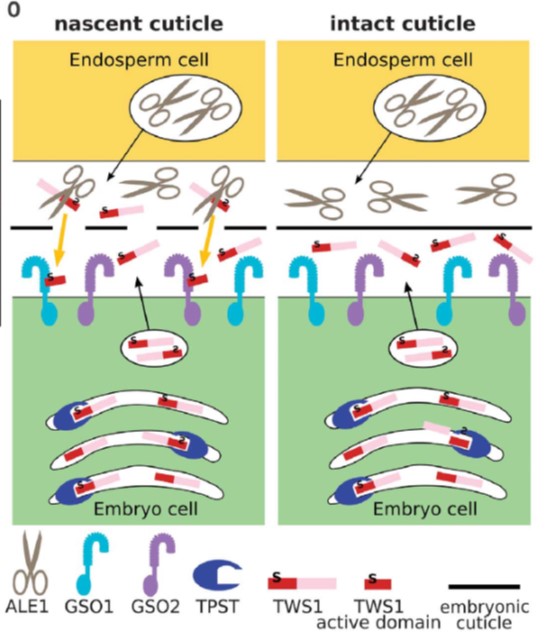
A two-way molecular dialogue between embryo and endosperm is required for seed development ($) (Science)
Plant Science Research WeeklyDuring seed formation, the developing embryo becomes covered with a water-impermeable cuticle. Several Arabidopsis mutants have been identified that are defective in cuticle formation and provide a framework for how it is formed. Doll et al. have added a missing piece to this puzzle. Briefly, embryo…
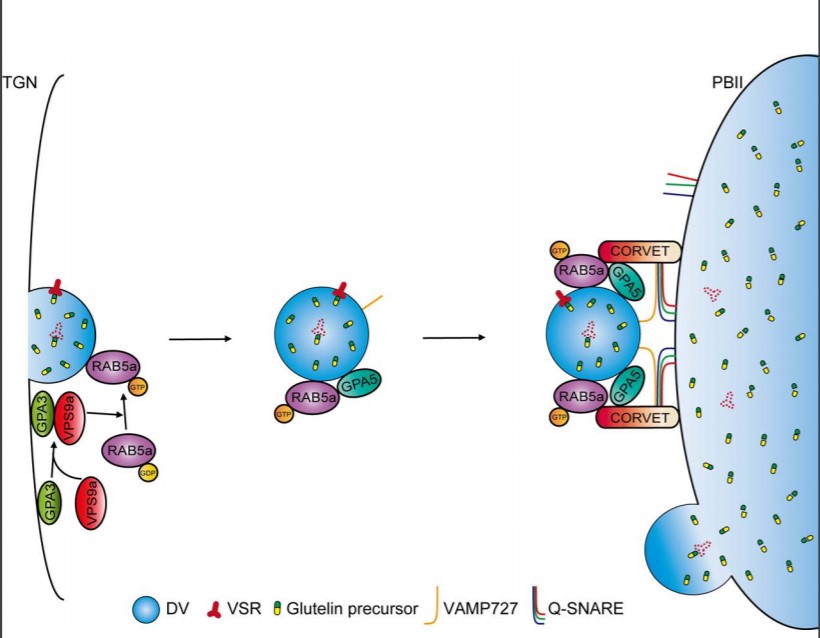
GPA5 encodes a Rab5a effector required for post-Golgi trafficking of rice storage proteins ($) (Plant Cell)
Plant Science Research WeeklyStorage proteins secreted into vacuoles during seed development serve as precursors for germination and plant growth. In this paper, Ren et al. identified a regulator, GLUTELIN PRECURSOR ACCUMULATION 5 (GPA5) that is involved in protein trafficking into the vacuoles during seed development. The loss…

